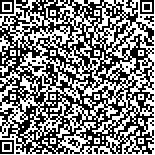| 摘要: |
| 体眠孢囊在甲藻生活史中扮演着重要的角色,它们可以在沉积物中保留很长一段时间,因此能够提供水体中浮游植物多样性的综合记录。作者选择了长江口孢囊种类最多的一个站位(122°30.64′ E,29°0.01′ N),在2002年11月、2003年2月和5月采集了3次样品,首次通过萌发试验对长江口沉积物中的甲藻孢囊进行了研究,根据孢囊和藻类的形态学特征鉴定了其中的28种。这28种孢囊均出现在2002年11月的样品中,2003年2月和5月的样品中分别发现了5种和17种。9种甲藻孢囊在中国沿海首次被记录,它们是Alexandrium sp.,Scrippsiella ramonii,S.sp.1,Protoperidinium sp.1,P.sp.2,P. sp.3,Diplopsalopsis orbicularis,Diplopsalis lebourae,Gyrodinium sp.,并发现了A.tamarense,A.catenella和Lingulodinium polyedra等3种有毒甲藻的孢囊。Protoperidinium spp.中除了P.amerlcanum萌发孔都是六角形的,而作者记录的P.sp.3萌发孔是裂开状,是一个特殊的现象。S.trochoidea和A.tamarense是研究站位的优势种,在2002年11月的样品中分别占到29.5%和11.4%。长江口A.tamarense孢囊的丰度由于萌发可能被低估。孢囊的密度与其它海区相比较大,部分反映了该海区赤潮的频率和严重性。 |
| 关键词: 甲藻,孢囊,长江口 |
| DOI: |
| 分类号: |
| 基金项目:国家重大基础研发展规划项目,2001CB409702号和国家海洋局海底科学重点实验室资助项目,2004-2005 |
附件 |
|
| PRELIMINARY STUDY ON DINOFLAGELLATE CYSTS IN CHANGJIANG RIVER ESTUARY |
|
GU Hai-Feng1,2, FANG Qi1,2, LI Rui-Xiang2, LAN Dong-Zhao1,2, ZHU Ming-Yuan2
|
|
1.Third Institute of Oceanography State Oceanography Administration;2.First Institute of Oceanography State Oceanography Administration
|
| Abstract: |
| Resting cysts play an important role in the life cycle of dinoflagellates. They can stay in the sediment for a long time and thereby provide an integrated record of phytoplankton diversity in the water column. We selected a station at Changjiang River estuary with richest cyst diversity and collected sediment in November of 2002, February and May of 2003. The sediment was sonicated and screened through a 100μm sieve and collected on a 15μm sieve. Identification of dinoflagellate cysts was based on morphological criteria. Selected cysts were isolated by micropipette and incubated in a 96 well plate filled with f/2 medium. The incubated cells were used to confirm species identification.
28 species were identified according to the cyst and cell’s morphological character. All species appeared in the sediment collected in November of 2002, but we only found 5 and 17 species in the sediment of February and May of 2003. 9 species were recorded for the first time in China Sea. They were Alexandrium sp., Scrippsiella ramonii, Scrippsiella sp.1, Protoperidinium sp.1, Protoperidinium sp.2, Protoperidinium sp.3, Diplopsalopsis orbicularis, Diplopsalis lebourae and Gyrodinium sp. The cyst of Alexandrium sp. is spherical(45μm diameter). The cyst wall is smooth without any surface ornament. It contains pale or transparent starch droplet and pale brown oil drops. There is a big and obvious accumulation body inside. The cyst of Scrippsiella ramonii is pale brown, spherical(38—42μm diameter), covered by long calcerous spines(10—13μm long). The end of spines is capitate and there is a bright accumulation body inside. The cyst of Scrippsiella sp.1 is oval(42μm long, 40μm wide) without any surface ornament. It has thick wall(3μm) and pale brown oil drops. There is a big and bright accumulation body inside. The cyst of Protoperidinium sp.1 is brown, spherical(52μm diameter) with smooth surface. The cyst of Protoperidinium sp.2 is pale brown, oval(45—50μm diameter), covered by spines 6—7μm long. The end of spines is wiry or closed. The cyst wall has two layers and an accumulation body is obvious. The cyst of Protoperidinium sp.3 is pale brown, spherical(52μm diameter). The wall has a single layer about 1μm thick and the surface is smooth without any ornament. The archeopyle is chasmic. The cyst of Diplopsalopsis orbicularis is brown, spherical(60μm diameter)with an obvious accumulation body inside. The wall surface is microgranular and consisted of a relatively thick(2μm)dark brown periphragm and a thin(1μm) endophragm. The archeopyle is delimited by a jagged parasuture on the lateral and dorsal surfaces of the epicyst. The cyst of Diplopsalis lebourae is pale brown, oval(40μm long, 35μm wide). The wall is smooth and consisted of two layers. The archeopyle is theropylic intercalary, a large transversely rectangular hexaform 1a. The cyst of Gyrodinium sp. is oval(47μm long, 45μm wide). The wall has a single layer with smooth surface. There are pale brown droplets with different size inside. The incubated cell is similar to Gyrodinium uncatenum morphologically.
Three species of cyst produced by toxic dinoflagellate(A.tamarense, A.catenella and Lingulodinium.polyedra) were also recorded. Protoperidinium spp. usually had a hexagonal archeopyle except P.americanum, but P.sp. 3 in this study had a chasmic archeopyle, which is unusual. S.trochoidea and A.tamarense cysts were dominant at this station, accounting for 29.5% and 11.4% in the sediment collected in November, 2002. The abundance of A.tamarense cysts was possibly underestimated as the result of germination. A.tamarense cyst density was rich compared to other areas, which reflected the high frequency and severity of bloom by this species in this area partly. To study the cyst composition in the sediment helped to understand the dinoflagellate diversity comprehensively. |
| Key words: Dinoflagellate, Cysts, Changjiang River estuary |
